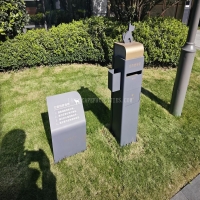Welcome to the website for landscape facilities products and knowledge.
What are the differences in carbon footprint between plastic and metal landscape round trash cans?
When evaluating the environmental impact of landscape round trash cans, the carbon footprint of plastic and metal options varies significantly. Plastic trash cans, typically made from polyethylene or polypropylene, have a lower production carbon footprint due to lighter weight and less energy-intensive manufacturing. However, they contribute to long-term pollution if not recycled properly.
Metal trash cans, often constructed from steel or aluminum, require more energy and resources to produce, resulting in a higher initial carbon footprint. Yet, metals are highly recyclable, often with lower emissions in recycling processes compared to virgin material production. Over their lifecycle, metal cans may offset their higher initial impact through durability and recyclability.
Key factors influencing carbon footprint include material sourcing, manufacturing processes, transportation weight, and end-of-life disposal. Plastic cans are lighter, reducing transportation emissions, but metal cans often last longer, reducing replacement frequency. Sustainable choices depend on local recycling infrastructure and usage context.
Ultimately, both materials have trade-offs. For lower short-term emissions, plastic may seem favorable, but for long-term sustainability, metal often proves more eco-friendly when recycled correctly. Consumers should weigh these factors based on their specific environmental priorities.
Related search:

Recommendation
Outdoor cat and dog feces trash can; Community pet trash can; Metal multi-color design